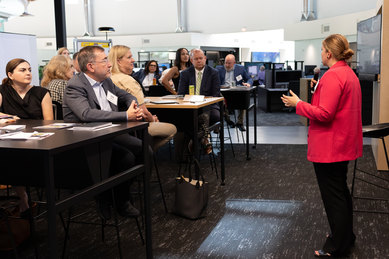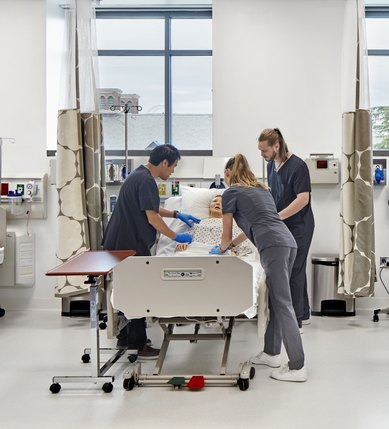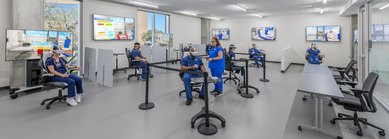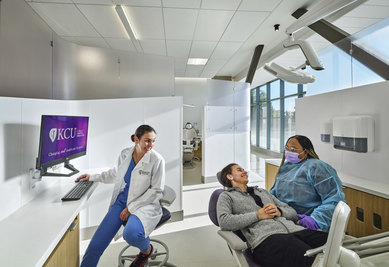How Do We Improve Access to Health Education and Care for Rural Populations?
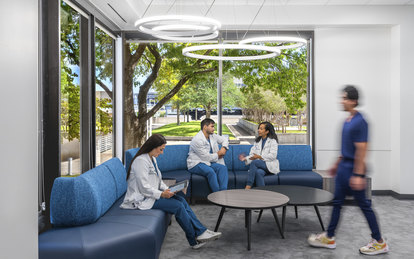
The Association of American Medical Colleges forecasts a shortage of over 86,000 physicians by 2036, and this shortage extends across the health professions to varying degrees. Addressing the shortage requires a significant amount of change, and adapting facilities to successfully support this growth are one of the most complex barriers for universities to address.
In light of the changing landscape of health education, SmithGroup recently hosted an Idea Exchange with leading educators and clinicians in the state of Arizona to discuss partnerships and explore how space and place can support educational opportunities throughout the state and across the nation.
During our conversation, three significant ideas emerged that are applicable to any state facing clinician shortages and challenged to provide medical care to rural populations.
IDEA #1: A CONSORTIUM FOR STATEWIDE COLLABORATION
Collaborating and forming statewide consortiums will help enable more effective solutions to the nation’s deficiencies in health education. Consortiums should include both public and private university partners, who aim to:
- Develop a regional model for physical training, virtual training and learning spaces that link the universities, health systems and community partners.
- Build capacity for clinicians and grow opportunities for preceptorships in clinical environments while growing capacity for healthcare statewide.
IDEA #2: RETHINK LEARNING ENVIRONMENTS TO ACCOMMODATE THE CURRENT GENERATION OF STUDENTS
One of the key challenges is to design support systems and learning environments that respond to the current generation of students today.
To start, educational space needs to be physically relocated by bringing programs to the learners and the rural communities they will serve. Currently, most educational spaces are not adjacent to clinical environments and difficult to access.
Additionally, significant changes are occurring in how students engage with learning activities and the types of education they will need to thrive in the future. There is a need to invest in simulated and real-world environments where students can learn and practice skills. Investment in technology of all kinds is critical to learn new skills through technologies like AR, VR and even distance learning. All educational programs need large-group gatherings a few times a year, yet an investment in that type of space is not always the best use of resources. Therefore, it is important to think differently about large-group settings, either through shared space or creative use of spaces available in local communities.
IDEA #3: CREATE A HUB FOR EDUCATION AND MEDICAL CARE
Universities compete for students, faculty, and funding, leading to a shortage of student placement opportunities. What if they collaborated to build a system that sustains a local workforce while training and retaining that workforce?
One idea is to establish a co-branded and co-funded centralized facility dedicated to interpersonal and interprofessional training. The first two floors could be designated for care delivery, including services such as social work, nursing, primary care, hospital, dental and pharmacy. Above, a simulation lab with a flipped model would serve a cohort of students from various universities. Students would work alongside care providers to meet with patients, gaining real-time learning experiences. Once a patient is discharged, a one-stop center would help them navigate referrals.
CONCLUSION
In response to the challenges faced by educators and clinicians, participants in the Idea Exchange unanimously agreed that collaborative partnership is essential. By breaking down silos, leveraging funding and prioritizing clinical training, multiple institutions can create innovative solutions that address today’s healthcare demands and enhance the quality of education across the United States, especially in rural areas.
